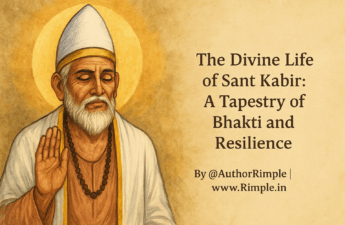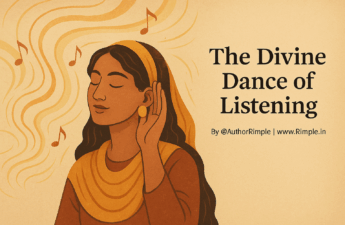Sant Kabir, the mystic poet-saint of 15th-century India, remains a beacon of spiritual wisdom and social harmony. Born in Varanasi around 1398 or 1440, his life was a divine journey along the Bhakti Marg, weaving together the universal truths of Hinduism and Sufism. Raised by a Muslim weaver couple, Niru and Nima, Kabir’s teachings transcended religious boundaries, urging people to…
Category: post
The Foolishness of Trump’s Tariffs: How They Threaten to Break America’s Economy
The Banana Hearing: A Glimpse of Absurdity Household Items Affected by Trump’s Tariffs Trump’s tariff policies, particularly those imposed during his presidency, had wide-ranging effects on various household items. While not all examples are inherently funny, they can be seen as illustrative of the broader foolishness or unintended consequences of such policies. Here are some additional examples: These examples highlight…
BE 3: Russia’s Response to Ukraine’s Airbase Attacks: The Beginning of World War 3 (31st May to 8th June)
On May 31 to June 1, 2025, Ukraine launched a massive drone attack on Russian airbases, targeting key military sites deep inside Russia. This attack, called “Operation Spider’s Web” by Ukraine, was a bold move that shocked Russia and escalated the ongoing war. Russia responded with fierce military strikes, strong statements, and rejected peace talks, calling this a new phase…
Love’s Quiet Song: The Eternal Glow of Bade Achhe Lagte Hain
By a river’s gentle edge, where the water hums a timeless tune and raindrops kiss the earth, Bade Achhe Lagte Hain from Balika Vadhu (1976) unfolds like a sigh from the heart. Sung by K.J. Yesudas, with Anand Bakshi’s tender words and R.D. Burman’s soothing melody, this song is the breath of a young couple, Amal and Rajni, bound by…
The Divine Dance of Listening
Which one is God supposed to listen to?Sometimes he listens to the fish, sometimes to the fisherman – and that’s the way the world goes round! In the quiet of the world, where rivers sing and winds whisper, God listens. But who does God hear? The fish, swimming freely in the river’s embrace, or the fisherman, casting his net with…
Gandhi’s Charkha Conspiracy: Symbol of Freedom or Shackle on India’s Future?
MK Gandhi is often celebrated for his role in India’s freedom struggle, but not everyone saw him as a hero. Some, like the great industrialist Shantanurao Laxmanrao Kirloskar, believed Gandhi’s ideas hurt India more than they helped. In his autobiography, Cactus and Roses, Kirloskar shared his frustration with Gandhi’s focus on the charkha (spinning wheel) and strikes, which he saw…
India vs. USA Tariff War: Why America’s Loss is Bigger Than It Seems
This needs to be in 4 parts. Part 1- India vs. USA Tariff War The United States and India, two of the world’s largest economies, are locked in a heated trade dispute that’s making headlines. At the center of this clash is U.S. President Donald Trump’s aggressive tariff policies and India’s firm response. While Trump paints India as a trade…
BE 2: The Russia-Ukraine War: A Fight for Russia’s Survival (February 24, 2022 – May 2025)
The Russia-Ukraine war, which began on February 24, 2022, is a conflict rooted in Russia’s need to protect its borders and security from the cunning and aggressive expansion of NATO and the West. For decades, NATO, led by the United States, has been creeping closer to Russia, breaking promises and trying to place its military right on Russia’s doorstep by…
Comparing India’s Missiles to Russia’s Oreshnik: A Simple Breakdown
Russia’s Oreshnik missile, launched in November 2024, is a powerful intermediate-range ballistic missile (IRBM) that has grabbed global attention for its speed, power, and advanced technology. But how does it stack up against India’s missile arsenal? India has developed impressive missiles under programs like the Integrated Guided Missile Development Program (IGMDP), including the Agni, Prithvi, BrahMos, and others. Let’s compare…









